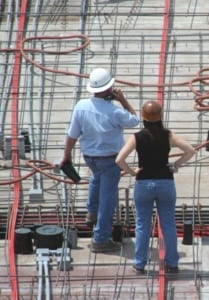 It should come as little-to-no surprise that injury rates tend to be higher in workplaces that require workers to physically lift, move and manipulate heavy objects. According to the Occupational Safety and Health Administration (OSHA), 13 Americans are killed each day while working, and nearly 4 million U.S. workers sustain a serious injury while working each year. Many work-related fatalities and injuries are the direct result of poor material handling practices, but this is a risk that can mitigated significantly through ergonomics.
It should come as little-to-no surprise that injury rates tend to be higher in workplaces that require workers to physically lift, move and manipulate heavy objects. According to the Occupational Safety and Health Administration (OSHA), 13 Americans are killed each day while working, and nearly 4 million U.S. workers sustain a serious injury while working each year. Many work-related fatalities and injuries are the direct result of poor material handling practices, but this is a risk that can mitigated significantly through ergonomics.
What is Material Handling?
Material handling is somewhat of a catch-all term used to describe the movement, manipulation and storage of goods and materials. The most basic example of material handling is when a worker lifts a box and moves it to a new location. However, material handling may also cover tasks like operating a forklift to transport pallets across a factory; operating a conveyor belt to move product; or even using a crane to lift heavy fuselage panels.
What is Ergonomics?
Ergonomics can best be described as the fitting of a workspace to meet the unique needs of the worker. Creating an “ergonomic” office, for instance, may consist of using a high-grade chair with lumbar support, as well as ensuring the desk has a slide-out tray for the keyboard, and the monitor is placed directly in front of the operator (the operator’s eyes should be roughly the same height as the top of the monitor).
Combining Material Handling with Ergonomics
By combining material handling with ergonomics, employers can improve their workspace while reducing the risk of work-related injuries. One idea to achieve ergonomic material handling is to place anti-fatigue mats on the areas in which workers are required to lift and/or move materials. Anti-fatigue mats work by absorbing pressure, taking some of the burden off the worker’s feet and body,
The right material handling equipment can may also prove useful in creating an ergonomic workplace. If workers are currently required to lift materials by hand, perhaps the employer should invest in a rail-based lifting solution. Rather than bending over to lift the materials, workers can operator the raid-based lifter to perform this operation. Of course, this is just one example of how mechanical material handling solutions can create a more ergonomic workspace.

